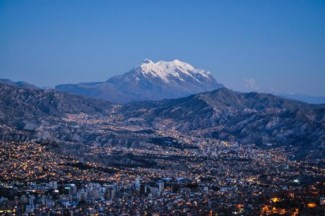As the gateway to Machu Picchu, the city of Cusco, Peru attracts over 3 million tourists from all around the globe each year. With this many people passing through the city, you can imagine why local residents feared the worst when the COVID-19 outbreak began. However, out of a population of approximately 429,000 people, the city has only four COVID-19 related deaths – three tourists who traveled to the area and one native with previous risk factors.

Machu Picchu, a UNESCO World Heritage Site, brings 3 million tourists from around the world to the Cusco region of Peru every year.
One death out of 196 confirmed cases for the city makes for a remarkably low fatality rate of 0.5% for the native population. Peru as a whole has a fatality rate closer to 3% with over 6,000 deaths, making it one of Latin America’s most affected countries. Many believe the fatality rate to be even higher as testing has not become widely available in the country.
To understand why Cusco is such an outlier when compared to the rest of the country, there are several factors to take into consideration. One of those factors that researchers haven’t quite been able to figure out, but believe plays a role, is altitude. The Cusco region of Peru sits at 11,152 ft elevation compared to the capital city of Lima that sits at only 512 ft elevation.
Research comparing the high-altitude regions of Tibet, Bolivia, and Ecuador has revealed similar trends. A study completed April 22, 2020 and published in the June 2020 scientific journal “Respiratory Physiology & Neurobiology” indicates that populations living above 9,842 feet elevation reported significantly lower levels of COVID-19 cases than populations living at lower elevations. The research showed the infection rates in the Andes Mountains of Bolivia were one third the infection rates the rest of Bolivia, and the infection rates in the Andes Mountains of Ecuador were one fourth of the rest of Ecuador. In both Bolivia and Ecuador, the areas with the highest concentration of COVID-19 cases were located at an elevation close to sea level.

Why populations living at higher altitudes are experiencing lower infection rates is still not well understood, but there are a few theories at play. It is hypothesized that people living at altitude are able to live in a state of chronic hypoxia, or a state of chronically low oxygen in the blood. Hypoxia is one of the conditions caused by COVID-19, and if a person’s body is already used to low levels of oxygen, their symptoms may not be as severe. There are other environmental considerations at altitude that may shorten the life-span of the COVID-19 virus, including high levels of UV radiation that can kill the virus, low barometric pressure that does not support the weight of the aerosolized droplets that the virus lives in, and dry thin air that does not support the transmission of aerosolized droplets.
However, as intriguing as the effect of altitude on COVID-19 statistics is, it is important to note that there are several other proven factors that come into play when looking at these populations. First, most high-altitude towns and cities tend to be rural. When population density per square mile drops, the rate of transmission of infectious diseases also drops – rural settlements allow for natural social distancing. Second, populations living at higher altitudes have lower rates of obesity and generally have better overall health. Living at high altitude causes a reduction in the hormones that signal hunger, leading to consumption of fewer calories. Additionally, completely normal daily activities in a state of chronic hypoxia due to low levels of available oxygen in the air raises the body’s resting metabolic rate, leading to burning more calories. The healthier a person is prior to contracting an illness, the more likely their body is to be able to fight it off successfully.
Research regarding how altitude affects COVID-19 transmission, infection, and recovery rates is ongoing. It may be too soon to tell exactly why or how altitude comes in to play, but early findings are suggesting that now is a great time to be a resident of the great Rocky Mountains – but then again, when is it not?
References
https://www.ncbi.nlm.nih.gov/pmc/articles/PMC7207123/
https://www.ncbi.nlm.nih.gov/pmc/articles/PMC7175867/
https://www.ncbi.nlm.nih.gov/pmc/articles/PMC5094724/
https://en.wikipedia.org/wiki/Machu_Picchu#/media/File:80_-_Machu_Picchu_-_Juin_2009_-_edit.2.jpg
https://en.wikipedia.org/wiki/Machu_Picchu#/media/File:80_-_Machu_Picchu_-_Juin_2009_-_edit.2.jpg

Megan Schiers is a 3rd year Physician Assistant student studying at Midwestern University in Glendale, AZ. She graduated from Idaho State University in Pocatello, ID with a Bachelor of Science in Dental Hygiene and worked as a dental hygienist in Strasburg, CO for two years prior to starting PA school. She is passionate about increasing access to healthcare in rural areas and hopes to specialize in emergency medicine or cardiothoracic surgery following graduation this fall. During her six weeks in Frisco, CO, she has enjoyed hiking in the beautiful mountains, camping at Camp Hale Memorial, visiting Maroon Bells, and checking out Black Canyon of the Gunnison National Park.
